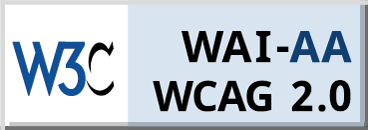IT and the Social Web
IT is the Rodney Dangerfield of the business world. It just doesn’t get enough respect.
Several months ago, I argued that IT is the primary underpinning of digital marketing. In fact, it’s actually the presence and power of IT that enables many of the new forms of customer connection and offers unheralded experiences to the consumer. While this continues to be true, IT is too often forgotten as a primary contributor to any and all marketing. And the burgeoning budgets for digitization invariably don’t include enough provision for IT.
We could say the same for social media and its increasing dominance over the Internet. The industry and financial markets are fully enamored of these technologies and the possibilities they enable. They’re also pointing to offshoots that presuppose the existence of strong and mature IT. There needs to be discussion about the role of IT and IT professionals in enabling the future wrought by Facebook, Twitter, LinkedIn and the thousands of social sites, blogs, consumer forums and other outposts on the Internet.
The Social Web
Since its inception, the social Web has experienced phenomenal growth. According to Twitter CEO Dick Costolo, there are more than 173,000 tweets sent over the Twitter network every minute. LinkedIn founder Reid Hoffman says that every second two new members join LinkedIn as we move from an “information age” to a “network age.”
Facebook now boasts more than 800 million members. This is an astounding feat for such a new company. The network age is here, and it’s powered by the social Web. As with all such epoch-making trends, there’s an entire ecosystem of connected products and services emerging. They’re all getting huge attention in the technology, business and investing circles.
IT forms the foundation for all these technologies and all aspects of the social Web in one way or another, but it remains the unsung hero. Let’s examine some of the elements of the social Web ecosystem, look closely at where and how IT fits in and is the driving force of this ecosystem, and how we need to collectively work to get IT its rightful due.
The Social Ecosystem
Social Media Platforms: Think about the nature of Facebook, Twitter, LinkedIn, Travel Advisor, Yelp, Amazon and the like. These are large spaces on the Web where consumers can share content. They can offer opinions, transact and build linkages. In each case, the scale and the experience provided are core to success. This automatically implies a large role for IT. These companies run on IT. Without their IT departments, these companies would have no products or no real offerings. The IT staff members are the real heroes behind the scenes keeping these platforms up, running and responsive.
Analytics, Presentation and Interpretation Services: There’s a large collection of companies devoted to interpreting, visualizing, and providing analytics and measurements of consumer behavior on the social Web. Companies such as Networked Insights Inc., Metavana Inc., Clarabridge, Vocus Inc. and PRN Corp. are devoted to being the “interpreters” of the social Web. They look at the statistics, figures and landscape, and provide analysis and interpretation to marketing buyers, brand advocates and market researchers.
In each case, the ability to work with IT, to connect to existing IT systems and to render services across networks is crucial. All too often, though, these companies provide very little by way of IT-friendly guidance or messaging. This dismissive messaging thus relegates IT to a bit part in a play IT helped to write, direct and produce. There needs to be a greater degree of balance between the needs of the immediate buyer, which is often marketing, and the long-term sustainability of the solutions. This is often lead by IT, even in the Software as a Service environment.
Big Data Providers: Companies like IBM Corp., Microsoft, Oracle Corp., Adobe Systems Inc., SAS Institute Inc. and a host of startups are providing products and services to help customers deal with the emergence of what is being called “big data.” This refers to both structured and unstructured data sets of unheralded size and scale. Megabytes and gigabytes have given way (and will continue to give way) to petabytes and yottabytes. Big data implies big software, big analysis and big visualization—all of which imply IT. Big data and IT are inextricably linked. The community of IT professionals must be more vocal in staking its claim in this growing technology trend.
Digital Agencies: Brands look to digital agencies to leverage the social Web for the usual outcomes. They want to increase profits, loyalty, audience engagement and brand awareness, and decrease churn. More and more, the social Web is seen as a crucial piece of a company’s digitization strategy as companies abandon traditional media for its digital brethren. Digital marketing presupposes IT as a core ingredient. When digital marketing is successful, IT professionals are organic and essential parts of the production teams. When it’s unsuccessful, it’s often because marketing, strategy, development and IT operate independently of each other.
These are just four of the many categories within the realm of the social Web. In each, IT is a fundamental element. Also within each, the role of IT is diminished because the best IT is “silent IT,” or so it has been thought.
The rise of social media and more digital experiences—and the rise of the social-local-mobile nexus—has created an unprecedented opportunity for IT professionals to liberate themselves from the straightjackets of perception in which they’ve been placed.
At no time in the world’s economic history has technology been more prevalent as a generator of business, as opposed to merely functioning as an enabling factor. IT is technology at its purest. IT has to tell its story and tell it loudly. Stoic silence is no longer an acceptable alternative.

 Hitek Remote Support Call
Hitek Remote Support Call 












Leave a Reply